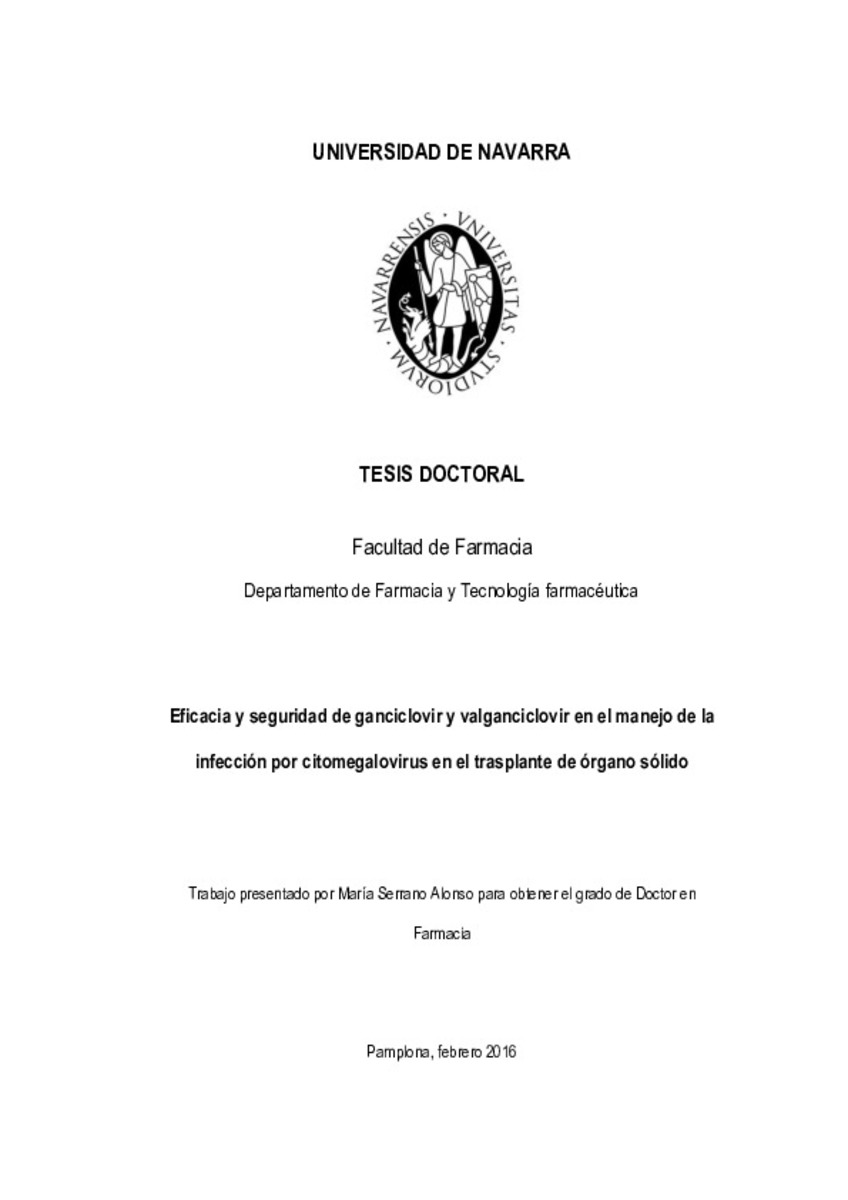Eficacia y seguridad de ganciclovir y valganciclovir en el manejo de la infección por citomegalovirus en el trasplante de órgano sólido
Keywords:
Análisis clínicos
Materias Investigacion::Farmacia
Citation:
SERRANO ALONSO, María. “Eficacia y seguridad de ganciclovir y valganciclovir en el manejo de la infección por citomegalovirus en el trasplante de órgano sólido”. Fernández, M. y Herrero, J. I. (dirs.). Tesis doctoral. Universidad de Navarra, Pamplona, 2016.
Statistics and impact
0 citas en

0 citas en

Items in Dadun are protected by copyright, with all rights reserved, unless otherwise indicated.







